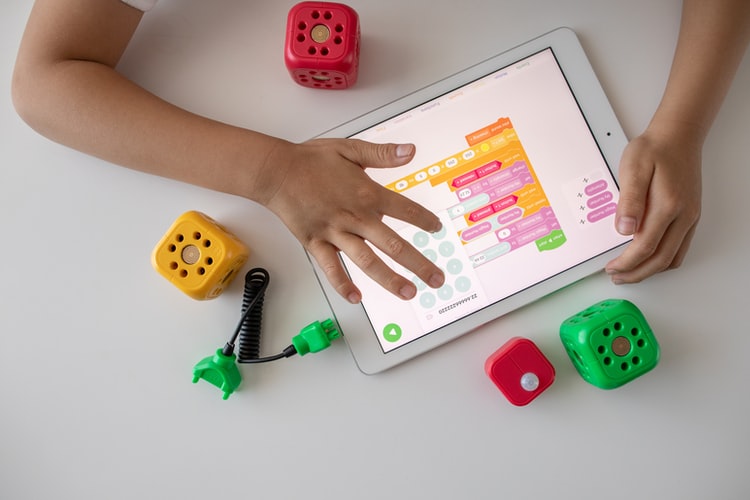

When I hear autonomous learning, I think robots. It somehow conjures up images of a Sci-Fi future where information is uploaded to our brains. It certainly does not sound like a child who can discover things on their own. Somewhere along the way, we’ve managed to make something as simple as learning on your own sound incredibly technical and far-fetched.
E-Learning has always been synonymous with autonomous learning. We look to technology as the key to transforming education, the potential to unlock independent learning is always a key element in these discussions. And, in many ways, technology really does a pretty great job! When I buy a shiny new gadget, I tend to run to YouTube when I get stuck and not the giant manual issued with the gadget.
In this example technology is undoubtedly useful, but it’s not the reason why I am able to learn about my new gadget independently. If the WiFi was down or Eskom had taken a break, the good old manual would have done perfectly fine. Technology, YouTube in this example, isn’t the key to my autonomous learning, but rather an inherent curiosity and courage to learn independently.
This attitude is not something that just happened, it’s an attitude that was cultivated over time. It’s an attitude that was encouraged in a young mind and carried into adulthood. It is this attitude that enables us to become life-long learners. It is this attitude that has taken a high school English teacher to an E-Learning adviser and who knows where next? It gives us the ability to be adaptable.
So why then are we so scared to allow our learners to think and learn independently? We are living in incredibly volatile times when the only certainty is change. The ability to adapt, to teach yourself new skills, is rapidly becoming the single most important skill one can have. But are we fostering this skill in our learners?

When schools closed in 2020 everyone scrambled for E-Learning. We were all frantically trying to source and create digital resources so that schooling and learning may continue at home. When we discovered that, despite our best efforts, learning was not taking place nearly as effectively as we’d hoped, should we really have been surprised? Were our learners prepared to learn independently, or are they wholly dependent on their teachers?
Autonomous learning is a skill that is developed over time. The more independent you allow learners to be, the better they become at it. While technology might be a powerful tool to facilitate autonomous learning, it’s dead in the water unless the correct attitude is cultivated. If we supply a matric learner with all the digital resources he/she needs to study independently, but they’re wholly dependent on their teachers, don’t expect results.
So is technology and E-learning still the key? Well, in a sense I believe it still is, but not in the way we often push it. Our approach is usually focused on digital resources and technology, but if we have not put in the hard yards to develop the required mindset, the results won’t come.
The use and availability of Digital Educational Tools (EdTech) have exploded recently. With this massive increase, companies have been forced to find ways to monetise their offerings to maintain servers, etc. Unfortunately, one key feature usually reserved for paid versions is the ability to track learner activity. Teachers are subsequently reluctant to use these tools because “I want to know what the kids in my class are doing!”
Why? While there is a definite argument that it could help inform intervention and teaching approaches, it seldom does. How often do we really analyse and use the results from a Quizizz, Kahoot, or any other digital quizzing tool? A more effective strategy could be to help learners understand how they can analyse and assess their own learning. In the simplest sense: just check where you went wrong and see if you can figure out why.
Only when learners understand their own knowledge gaps will digital tools and technology become powerful tools of learning. In this way, we actually empower our learners to take ownership of their learning, but we need to be willing to hand over the keys and help them figure out what they need to learn as opposed to telling them. They will, after all, be the only constant in their life-long education. Making them entirely dependent on you is, in a way, short-sighted.
E-learning could very well be the catalyst for this change, but only if we realise that our focus should be on the attitude and not the tool. If we can get children to rediscover the joys of learning and empower them to do so independently, any content we throw at them can become a breeze.
Do you have an educational app, video, ebook, course or eResource?
Contribute to the Western Cape Education Department's ePortal to make a difference.


